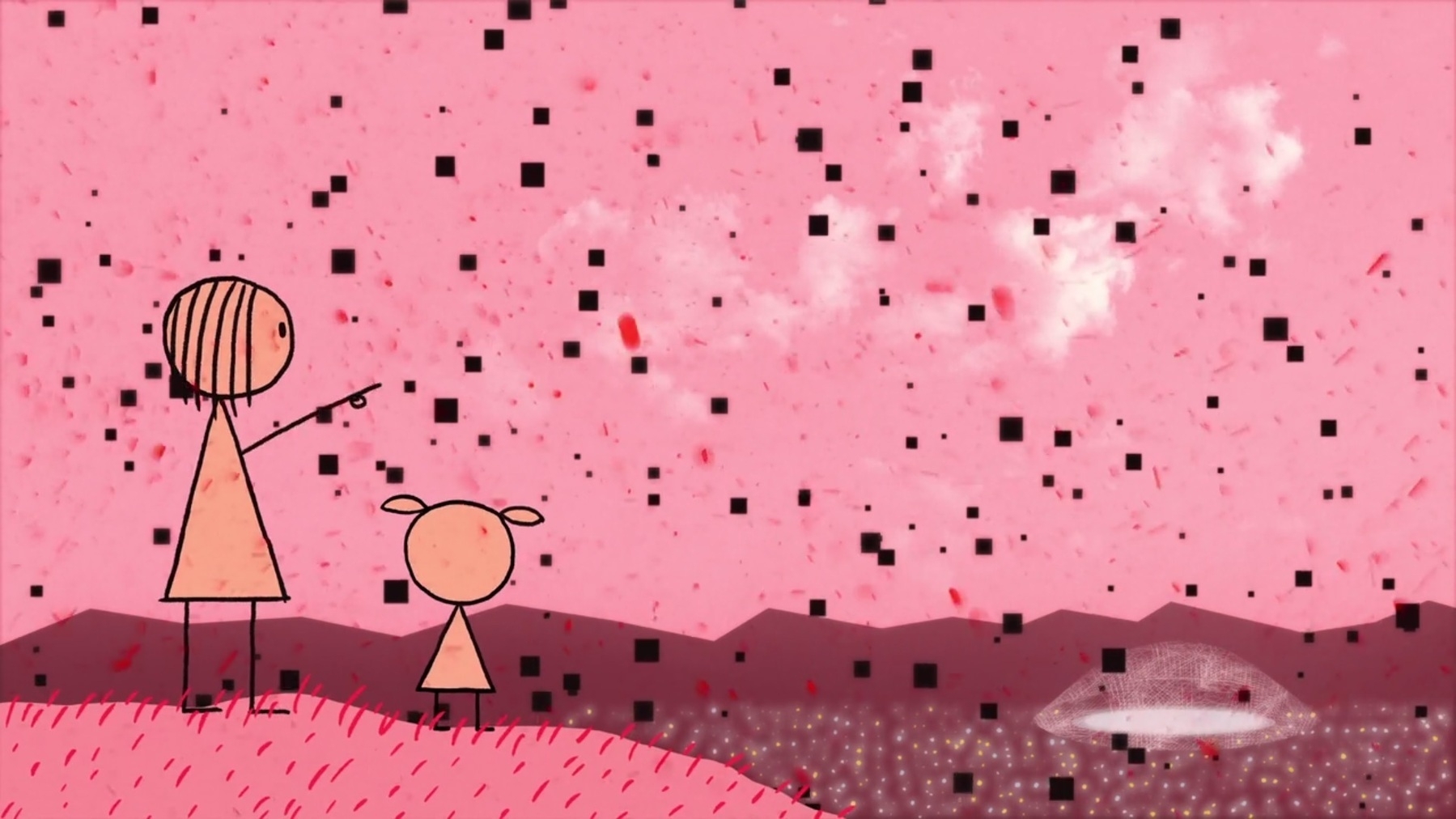10oclockdot:
Catching Up #22: World of Tomorrow (dir. Don Hertzfeldt, 2015) It’s been about a week since Netflix began streaming Don Hertzfeldt’s 2015 short World of Tomorrow, which I think is long enough to qualify for an episode of Catching Up (given how much I love Hertzfeldt). In my July 2013 write-up on Hertzfeldt for The Final Image, I opened with the following observation: “Until recently, Don Hertzfeldt’s short animated films could be mistaken as nothing more than insidiously macabre comedy. But with the completion of his recent trilogy It’s Such a Beautiful Day…, it has become clear to me that Hertzfeldt’s films concern nothing less than the fundamental act of creation. And by creation, I don’t just mean artistic creation. I mean the wresting of a cosmos out of a primordial state of chaos.” (here) Without fail, World of Tomorrow rises to this description and breathtakingly surpasses it. Not only has Hertzfeldt imagined a new future-universe more insightfully, more beautifully, and more totally than in any previous project, he surrounds us with it so immediately that he even has time to destroy it all, too. Now, this appetite for destruction has always overrun Hertzfeldt’s films. But here the bizarre violence and deadpan dark humor have almost disappeared entirely, opening a new space for legitimate philosophical musings on the entwined natures of time and death. When news of Abe Vigoda’s death reached me yesterday, I recalled that in the early 80’s People Magazine had accidentally printed that he was dead, and this greatly-exaggerated report of his death has been played for humor ever since. But in the same way that the Twitter account which reproduced On Kawara’s I Am Still Alive postcards (as tweets) for the digital age took on greater significance the moment Kawara died, the jokes about Abe Vigoda’s death take a strange conceptual turn now that he has actually died. Suddenly, albeit 34 years late, People’s erroneous report is accurate. This led to a further thought: each human life occupies a slim sliver of time compared to the total duration of human civilization, and a still-more-vanishingly-minute shaving of the total age of the earth or the universe. Why not, then, print that all living persons are dead? Sure, the report would be momentarily inaccurate, but then eternally correct not long thereafter. World of Tomorrow addresses the awesome scope of time from a similar matter-of-fact, melancholy perspective, pitting the frailty of human attempts to beat time against the thermodynamic guarantee of eventual annihilation. In World of Tomorrow, a clone from the future visits her past self as a child and, through time travel, introduces the pre-K progenitor to the title topos. In the future, it seems that most of human activity is organized around trying (and failing) to escape death. The elderly upload their brains into cubes (apparently a terrifying procedure), the young clone themselves (but the copies are imperfect and invariably deteriorate and die), the human race spends most of its time looking at screens displaying the world of the past or going in search of lost memories, and the poor, seeking any route of salvation from an imminent asteroid impact (in the future), turn to cheap time-travel, which, due to math errors, throws their bodies into space to burn up resplendently on re-entry. (I especially respect this terse analysis of class.) Most profoundly, the clone-guide takes her toddler-grandmother on a tour of one of her treasured memories: a controversial art exhibit which she viewed when she was young. The artist placed a brainless human clone in a vitrine alive, allowing it to age and decay for the course of a human life, and eventually die. The clone-guide recalls how people grew very fond of the boy in the vat, naming him, returning to visit of the course of decades, and mourning his death. As I watched this scene, I asked myself whether it was the lot of humans to be unable to truly understand something without an artwork to reveal the retrospectively-obvious. What else was this imagined art project except an analysis of the effects of time on humans? Haven’t we all aged? Haven’t we seen people we’ve loved age and die? Don’t we wish that we could stop time and preserve beloved things in a changeless state? Don’t we always fail? The conceptual elegance knocked me over. And here it hit me that Hertzfeldt seems to have embarked upon a new project in this film to distill the human condition down to some fundamental element of pathos. Before, Hertzfeldt defended himself against time and decay with a fusillade of bitter, macabre humor, obscuring the fact that these themes have (almost) always been his primary focus. But in World of Tomorrow, the jokes have fallen away almost entirely, leaving the artist naked among these cold realities. And thus, he found it: the common feature of all human pathos is our drive to stop time, in which we always fail, and for which we always try again, every day, again and again, until we die. “Now is the envy of all of the dead,“ the clone-guide tells her past self. Elsewhere, she also remarks: “I am very proud of my sadness, because it means I am more alive.” Hertzfeldt might say the same. For the moment anyway. We’re all doomed to go soon enough. But for today, It’s Such a Beautiful Day. Or, as the girl squeals in the final line of World of Tomorrow, “What a happy day it is!”



